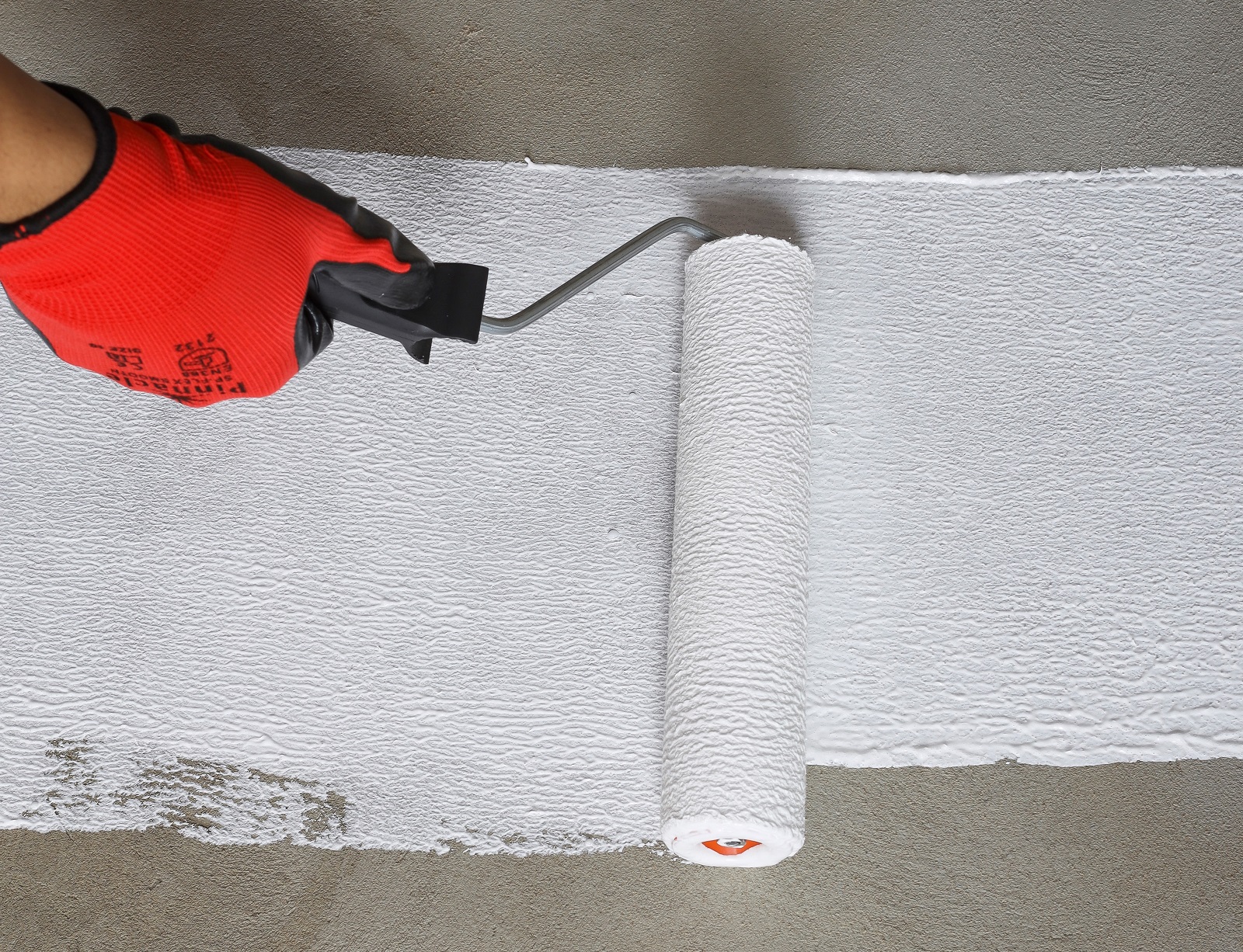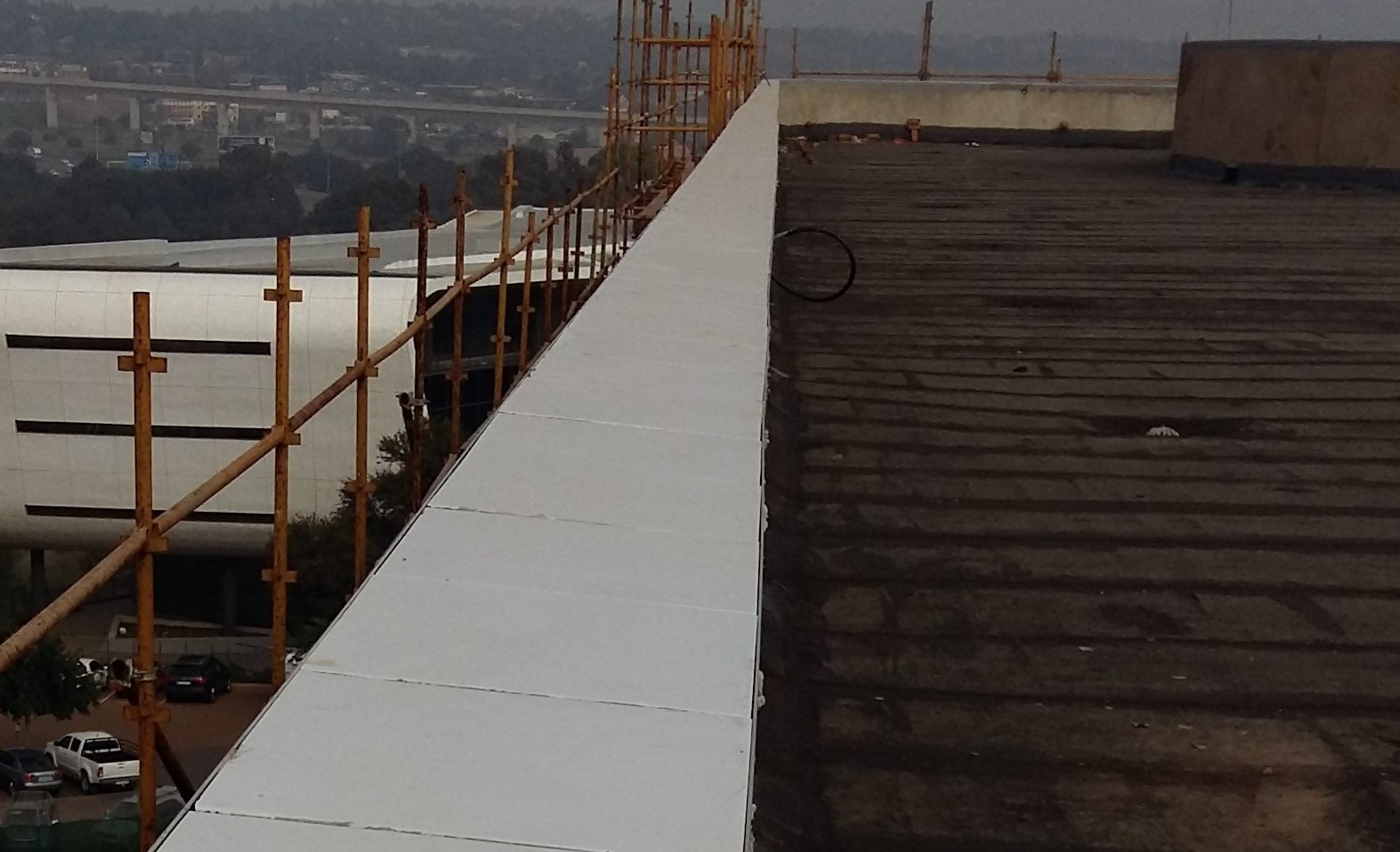Waterproofing roof slabs and parapet walls
With the arrival of seasonal rains you may find that your flat roof structure or exposed parapets are not waterproofed correctly, leading to the ingress of water. The result is water damage shown on ceilings and walls of the rooms below. It must be noted that this could also happen it the water outlet on the roof is not draining properly, thereby flooding the lower levels.
To prevent water seeping through the substrate, it should be waterproofed with a fibre-enriched acrylic-based liquid waterproofing compound. TAL offers TAL Superflex Fibre 1K, a flexible waterproofing system that can be left exposed on non-trafficable roof slabs and parapet walls. The product is available in grey or white and is UV resistant. It may also be painted over, using a high-quality exterior grade acrylic paint.
It should be noted that the application of waterproofing compounds is a skilled operation and should only be carried out by experienced artisans with the correct training.
Preparation
Carrying out the proper background preparation procedures in waterproofing exterior suspended slabs, whether leaving them exposed or prior to tiling, is essential. New substrates should be allowed sufficient curing time and prevailing moisture levels need to attain 3% or less. Any surface defects must be made good. Small holes and voids can be filled using TAL Rapidfix mixed with TAL Screedbinder, as a total water replacement.
Priming
Priming of concrete, screed or render substrates that are clean and dry and free of all traces of curing agents, laitance, dust, loose particles and surface contaminants is not usually required. However, highly porous surfaces should be primed with a neat coat of TAL Floor Primer, ensuring complete coverage of the surface.
Where applicable, a suitable flanged metal upstand should be placed around pipes or vents on the roof. This should be lightly sanded and primed with an anti-corrosive agent (e.g. zinc chromate). Once it is dry, a TAL Floorkey slurry should be applied, and again left to dry.
Roof penetrations
To allow for movement, apply a 10mm bead of flexible silicone sealant around the base of the pipe. Due care must be taken to ensure that the silicone bead is not flattened out – i.e. the silicone must be allowed to cure for approximately 12 – 24 hours.
Apply the first coat of TAL Superflex Fibre 1K using a short pile (mohair) roller, then immediately bed TAL Superflex Membrane around the pipe and surrounding substrate. The membrane must be pushed into the corners, ensuring that the entire interface is covered with TAL Superflex Membrane.
Apply a heavy topcoat coat of TAL Superflex Fibre 1K to completely saturate the membrane before the first coat dries.
Allow the TAL Superflex Fibre 1K application to dry, before placing a suitable flashing collar around the penetration, sealing it to the pipe with a suitable flexible sealant. Due to its excellent flexibility, the product will accommodate normal building movement. A membrane should be used as reinforcing for the whole installation only where significant building movement is anticipated.
Application

Apply the first coat of TAL Superflex Fibre 1K over the clean, prepared surface using a short pile (mohair) roller, at a rate of 1m²/1L.
Allow the first coat to dry sufficiently (minimum 2 hours, depending on site and ambient conditions) before applying the second coat in the same manner, at a rate of 1m²/1L, and in a cross-direction to the first coat to ensure complete coverage, with no air entrapment or pinholes.
Allow the TAL Superflex Fibre 1K system to dry completely (approximately 72 hours, depending on site and ambient conditions) before being subjected to light foot traffic or the application of covering materials, e.g. ceramic tiles.
For applications where the system is to be left exposed, apply a third coat of TAL Superflex Fibre 1K, or paint with a good quality exterior-grade acrylic paint.
Top Tips for contractors
Externals floors, such as roof slabs, and balcony floors should be to falls with adequate provision for drainage to ensure run-off of water. It is advisable to conduct a flood test 72 hours after application of TAL Superflex Fibre 1K in these areas.
Never start the waterproofing application if it is about to rain as rain will dilute uncured TAL Superflex Fibre 1K and cause run-off. Protect the system from rain or water immersion for at least three days after the application of the waterproofing compound.
Tiling roof slabs or parapet walls

Before tiling, allow the TAL Superflex Fibre 1K system to fully cure (3 days, depending on site and ambient conditions and substrate porosity) and do not leave exposed to foot or vehicular traffic.
Due to the impervious nature of the waterproofing compound, only rapid- or quick-setting adhesives should be used. The adhesive and grout system must be able to accommodate thermal expansion and contraction in the installation due to temperature fluctuations and frost. The tile installation also has to be water resistant as it will be exposed to rain. Mix the adhesive and grout with a latex additive like TAL Bond. It should be noted that whilst a latex-based additive improves the water resistance of the adhesive and grout in a tiling installation, this doesn’t make it waterproof, nor does it negate the need to apply a waterproofing system.
For more information on waterproofing, or for a bespoke specification for your project, contact the TAL Technical Advice Centre.
[Back]
blog comments powered by Disqus

